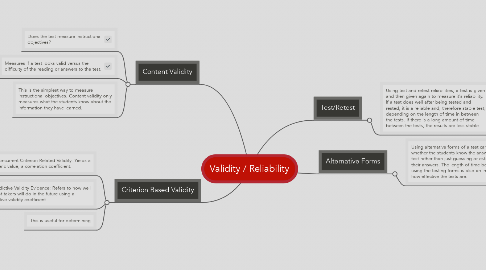Validity / Reliability
by Martie King


1. Content Validity
1.1. Does the test measure instructional objectives?
1.2. Measures if a test looks valid versus the difficulty of the reading or answers to the test.
1.3. This is the simplest way to measure instructional objectives. Content validity only measures what the students know about the information they have learned.
2. Criterion Based Validity
2.1. Concurrent Criterion Related Validity: Yields a numeric value, a correlation coefficient.
2.2. Predictive Validity Evidence: Refers to how well the test takers will do in the future using a predictive validity coefficient.
2.2.1. New node
